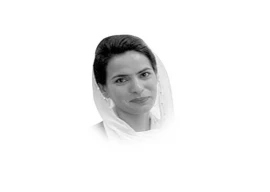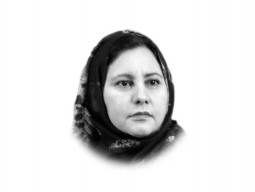
In addition to terrorism, extremism and intolerance of views that are different from one’s own, the country is plagued with resource inadequacies like electricity, gas and water shortages, environmental degradation, traffic mayhem, emergence of vigilante groups, land mafia and potential suicide bombers, growing incidence of rural and urban poverty, unemployment, inadequate housing, juvenile delinquency, erosion of purchasing power due to the inflationary spiral, an unprecedented debt burden, financial indiscipline and corruption, problematic health and education regimes, political instability, institutional wrangling, food shortages, widening income gaps, deteriorating terms of trade and breakdown of social and moral values. The net result is a social disorder, a growing sense of insecurity, capital flight and a doom’s day syndrome.
If someone has to explain the root cause of all these problems and implications thereof, the answer lies in one phenomenon: demographic pressures and the lack of a comprehensive strategy for human resource development. In 1947, the population of Pakistan (then West Pakistan) stood at 31 million people. Owing to a high birth rate approaching to around three per cent per annum, it rose to 62 million in 1970.The approximate population figure for the year 2012 is 186 million people of which 93 million fall in the age group between 0-17 years. Added to this is the fact that the increase in the population in the age group between 15-30 years in the period of 1998 and 2008 was around 33 per cent. Out of 93 million teenagers, 40 million do not attend school. If properly motivated, educated and trained to become productive economic agents, the young can become an engine of growth in an expanding economy. Failure to address this issue, as has been the case in Pakistan, has resulted in youth radicalisation and the kinds of problems identified in the foregoing paragraphs.
According to Nadeemul Haq, the deputy chairman of the Planning Commission, Pakistan will require a nine per cent annual rate of growth compared with the present 2.4 per cent per annum to gainfully employ its young population. India, with a robust economy and a well-thought and well-implemented human resource strategy, has been able to generate for itself a comparative advantage through its large reservoir of engineers and computer experts. Compared with this, seminaries in Pakistan, particularly those in Punjab, have produced a large number of indoctrinated extremists wreaking havoc on the body-politic of Pakistan. No operation, however successful, is likely to produce tangible results unless we eliminate the breeding grounds of the radical and extremist mindset. This calls for a comprehensive strategy of economic development encompassing basic structural reforms designed to impart training to the youth, in not only technical skills, but also in cognitive skills through a drastic change in the curriculum at primary, high school and higher secondary school levels with emphasis on values of tolerance, enlightenment and peaceful coexistence in a diverse and competitive world. An alternative narrative, free of individual, family, group, clan and national self-conceit, imbibing respect for basic human rights (particularly those of the marginalised) needs to be given to the young through a dynamic and progressive national agenda. This will be in addition to a growth-prone economy designed to reduce the population growth rate, create employment, reduce poverty, increase exports, promote investment and ensure distributive justice through improved governance.
Published in The Express Tribune, October 25th, 2012.














COMMENTS
Comments are moderated and generally will be posted if they are on-topic and not abusive.
For more information, please see our Comments FAQ